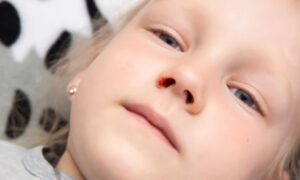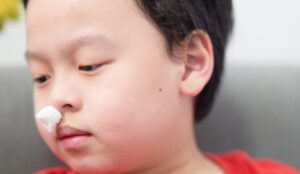Colds and flu are among the most common respiratory infections in children, particularly during the fall and winter seasons. It is important for parents to understand how long these illnesses typically last and how to best care for their children during this time. This article explores the duration of colds and flu in children, care suggestions, and preventive measures.
1. Duration of Colds in Children
Colds are caused by various viruses, the most common being the rhinovirus. Symptoms of a cold include sneezing, runny nose, sore throat, coughing, and mild fever. Typically, cold symptoms appear 1 to 3 days after exposure to the virus and last for about 7 to 10 days.
The typical progression of a cold is as follows:
- Days 1 to 3: Symptoms are most noticeable, including sore throat, runny nose, nasal congestion, and coughing.
- Days 4 to 7: Most symptoms begin to subside, especially fever and sore throat.
- After 7 days: Most children recover within a week, though coughing may persist for up to two to three weeks.
Cold care usually involves symptom management with rest, fluids, and over-the-counter medications, but antibiotics are not recommended unless a bacterial infection is present.
2. Duration of Flu in Children
The flu is caused by the influenza virus and presents more severe symptoms than a cold, such as high fever, headaches, muscle aches, extreme fatigue, coughing, and sore throat. Children infected with the flu usually experience the following:
- Days 1 to 2: Flu symptoms suddenly appear, including high fever, fatigue, and muscle aches.
- Days 3 to 7: Fever and other symptoms begin to improve, but coughing and fatigue may persist longer.
- 7 to 14 days: Most children recover within two weeks, though complications like pneumonia or bronchitis may occur in some cases.
The recovery period for the flu is generally one to two weeks. Flu symptoms can be more intense, so it is recommended that children receive flu vaccinations to reduce the risk of infection.
3. How to Differentiate Between a Cold and Flu
Though cold and flu symptoms may be similar, flu symptoms tend to be more severe and develop rapidly. Here are some key differences:
- Fever: Colds are usually associated with mild or no fever, while the flu often causes a high fever above 38°C.
- Body aches and fatigue: The flu is more likely to cause muscle aches and extreme tiredness, while these symptoms are uncommon in colds.
4. Care Suggestions
Whether your child has a cold or the flu, the following care tips can help:
- Ensure plenty of rest: Give your child enough time to rest and recover.
- Maintain hydration: Make sure your child drinks plenty of fluids to stay hydrated, especially when they have a fever or runny nose.
- Treat symptoms: Over-the-counter medications, such as fever reducers or cough suppressants, can be used to ease discomfort, but always consult a healthcare provider for appropriate dosages.
For the flu, if complications such as breathing difficulty or persistent high fever arise, medical attention should be sought.
5. Preventive Measures
Preventing colds and flu in children involves several key strategies:
- Vaccination: Getting the flu shot annually is the most effective way to prevent the flu, especially for children over six months of age.
- Hand hygiene: Encourage regular handwashing to reduce the spread of viruses.
- Avoiding sick individuals: Limiting contact with people who are sick can help protect your child from infection.
6. When to Seek Medical Attention
While colds and flu generally resolve with home care, there are certain symptoms that require medical attention:
- Fever lasting more than three days
- Difficulty breathing or wheezing
- Severe sore throat or ear pain
- Frequent vomiting or severe diarrhea
Conclusion
A cold in children typically lasts 7 to 10 days, while the flu may take one to two weeks for full recovery. Preventive measures, such as vaccinations and proper hygiene, can help reduce the risk of infections. During illness, supportive care with adequate rest, hydration, and symptom management is crucial for recovery.
References:
- American Academy of Pediatrics (AAP)
- Mayo Clinic
- World Health








